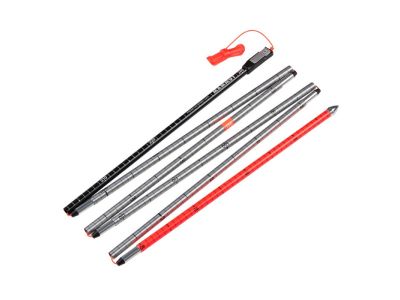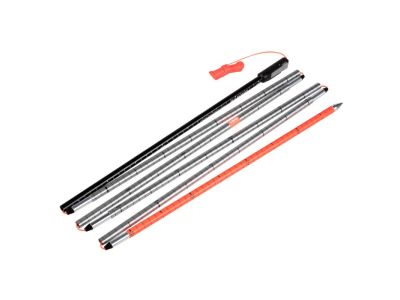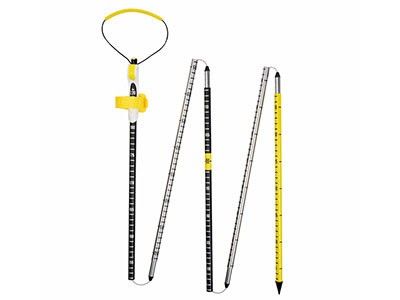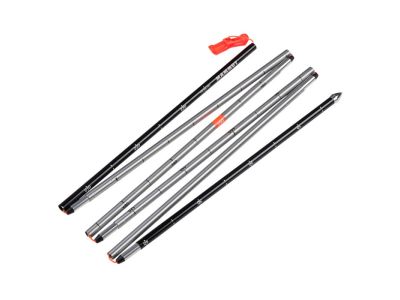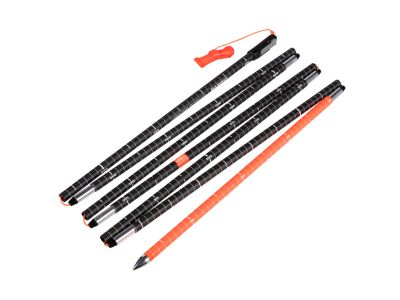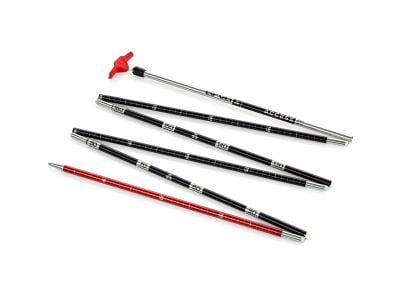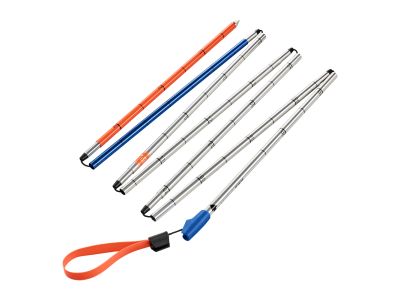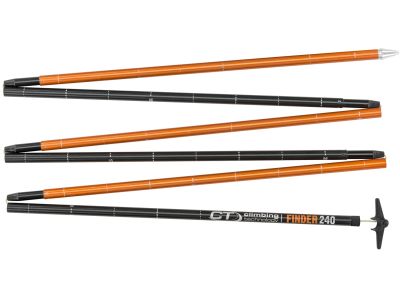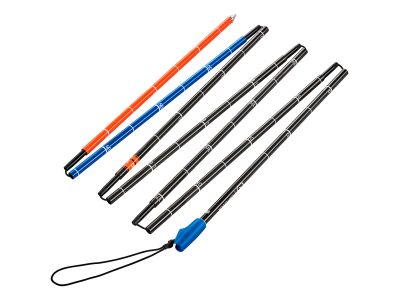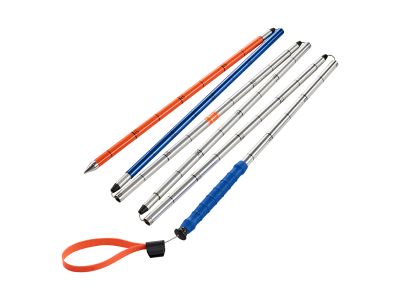Avalanche probes are essential tools used in avalanche safety and rescue operations. These collapsible poles are designed to penetrate snow and determine the depth at which a buried victim is located. They play a key role in accurately determining the victim's position, allowing rescuers to carry out a rescue operation efficiently and effectively.
Avalanche probes are typically made of lightweight materials such as aluminium or carbon fibre to ensure portability and ease of use in snowy and cold conditions. They consist of several segments that can be assembled and locked together, extending the probe to its full length. Common avalanche probe lengths range from 240 cm (94 in) to 320 cm (126 in), allowing for effective probing in a variety of snow depths.
The probe has depth markings along its entire length, allowing rescuers to accurately determine the depth of the victim once contact is made. These markings provide rescuers with key information to assess the urgency and scope of the rescue operation.
Avalanche probes feature a durable, pointed tip that is designed to penetrate the snow smoothly and efficiently. This allows rescuers to survey the snow in a systematic grid and search for the victim's location.
How to choose an avalanche probe?
When picking an avalanche probe, there are numerous factors you should consider, ensuring you have a reliable and effective tool for rescuing an avalanche victim. Here are some key factors:
- Length: The length of the probe is an important factor to consider. Probes typically range in length from 240 cm (94 in) to 320 cm (126 in). Longer probes are suitable for deep snow drifts, while shorter ones may be more convenient to carry and store. Pick a length that suits your typical snow conditions and the activities you are involved in.
- Material: Avalanche probes are commonly made from lightweight materials such as aluminium or carbon fibre. Aluminium probes are generally more affordable and durable, while carbon fibre probes are lighter and stiffer. Consider the balance between weight, durability, and price based on your needs and preferences.
- Weight: The weight of a probe is essential, especially if you plan to carry it for longer distances or during activities that require minimal weight. Lighter probes are typically preferred for their ease of use and less fatigue.
- Foldable design: Most avalanche probes have a foldable design that makes them compact for storage and easy to fold when required. Consider ease of assembly and a locking mechanism that will ensure quick and safe deployment during an avalanche situation.
- Durability: Look for a probe that is rugged and built to withstand heavy use in snowy and cold conditions. Consider the quality of materials and construction so that the probe can withstand frequent use and potential impacts.
- Marking: Check that depth markings are clear and visible along the entire length of the probe. These markings are essential to accurately determine the depth of the victim's burial and to aid in effective rescue operations.
- Grip and handling: Consider the design of the probe handle and grip. Look for features that provide a secure and comfortable grip, even when wearing gloves or in wet conditions. A comfortable grip increases control and accuracy while probing.
- Easy to transport: Consider how the probe can be carried and stored. Some probes come with a compact bag or case that makes them easy to transport and keep organized. Consider how the probe can be attached to a backpack or harness for convenient access.
It is important to note that proper training and practice with the chosen probe are essential to ensure proficiency in its use during an emergency. Attending avalanche safety courses and seeking advice from experienced professionals can provide valuable guidance in selecting the right probe.
How to care for an avalanche probe?
It is important to thoroughly clean and dry the probe after each use to prevent it from rusting or becoming damaged. Store it in a protective case or bag to prevent it from bending or breaking.
